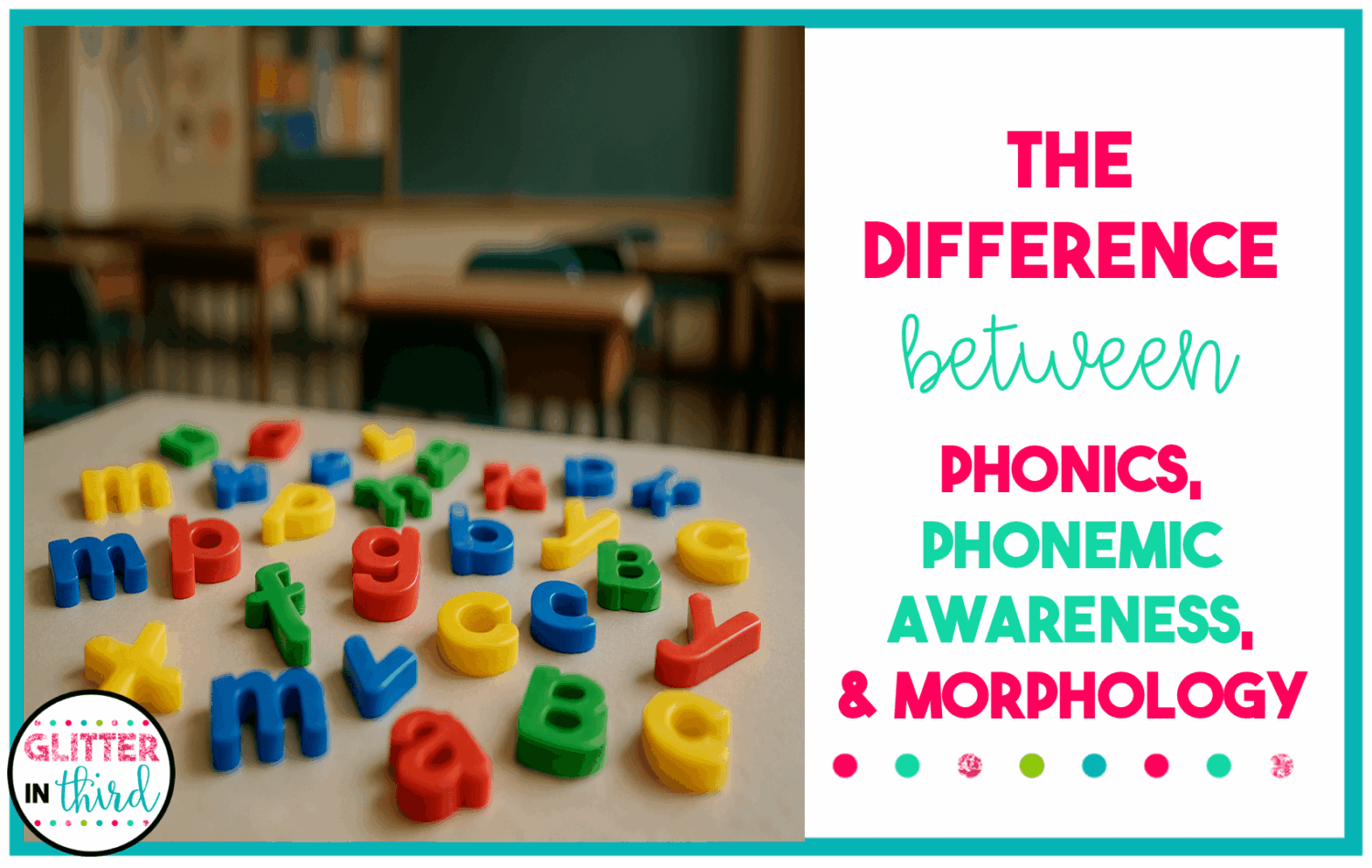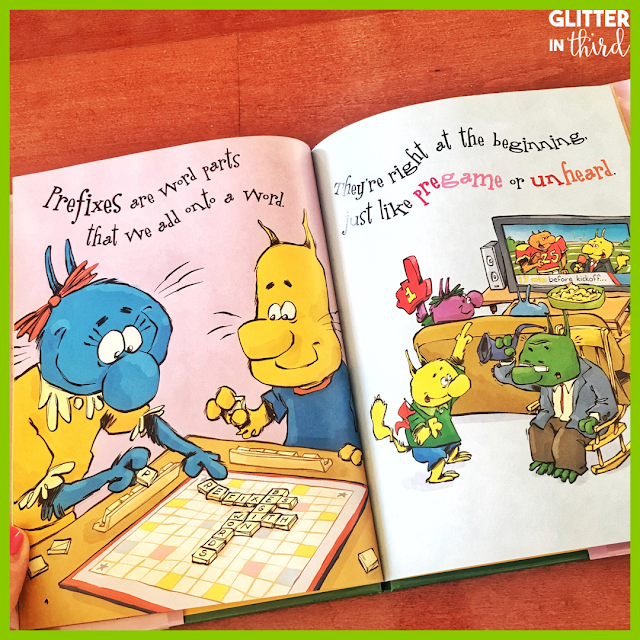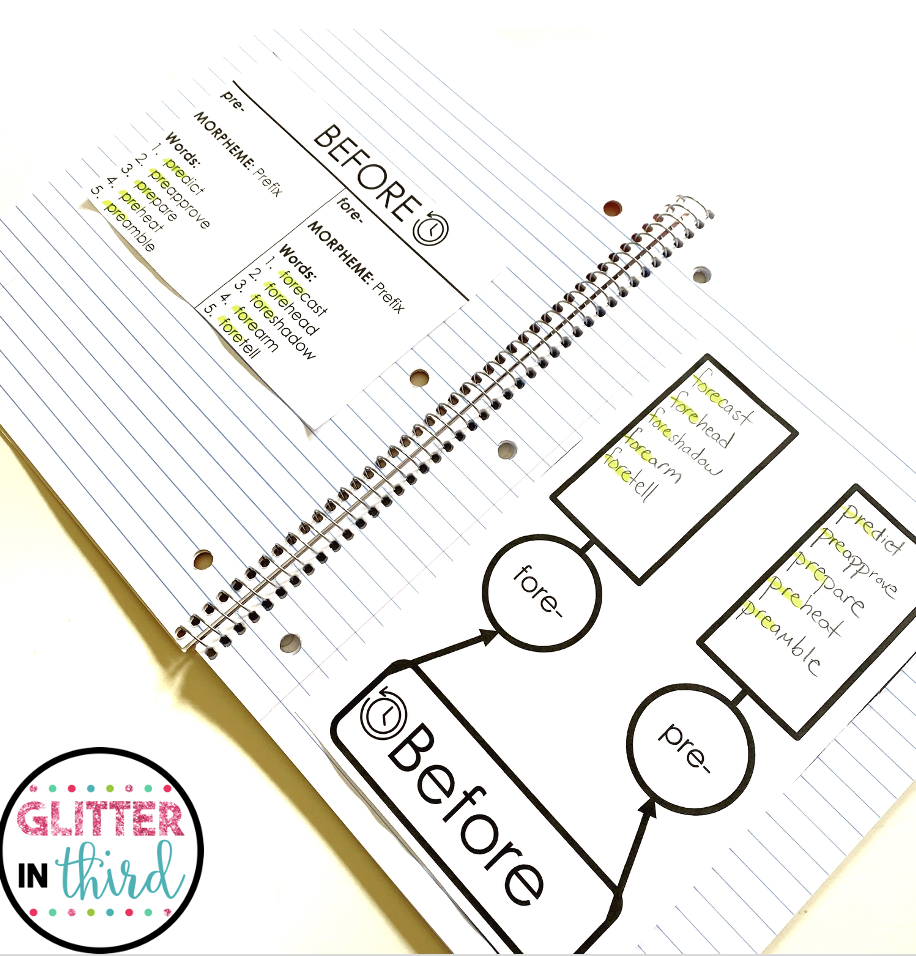Join the VIP Teacher Club!

If you’ve been exploring the Science of Reading, you’ve probably seen the terms phonics, phonemic awareness, and morphology used often. But what’s the actual difference between phonics vs phonemic awareness vs morphology—and how do we teach them all without feeling overwhelmed?
They’re closely related, and all three are essential. But they each play a different role in helping students become confident, skilled readers. Understanding how they work together can make a big difference in your instruction—and your students’ success.
Let’s break it down in simple, practical terms.
Need something easy to reinforce comprehension while you build those decoding skills?
I’ve created a free color-by-number reading passage that’s fun, no prep, and a great way to check for understanding. Drop your name and email below, and I’ll send it straight to your inbox.
What it is:
Phonemic awareness is the ability to hear and manipulate individual sounds (phonemes) in spoken words.
Key skills include:
Why it matters:
Phonemic awareness is a foundational skill that happens entirely in the mind—there’s no print involved yet. It helps students develop the mental flexibility needed for decoding and spelling.
Example activity:
Say the word dog. Now change the /d/ to /l/. What’s the new word? (log)
What it is:
Phonics is about matching spoken sounds to written letters or letter combinations (graphemes). It’s where reading and spelling really begin to take shape.
Key skills include:
Why it matters:
Phonics helps students make sense of how written language works. It’s the bridge from spoken language to reading.
Example activity:
Show students the word shop. Ask them to identify the digraph sh and blend the rest of the sounds to read the word.
What it is:
Morphology is the study of morphemes—the smallest units of meaning in a word. These include:
Why it matters:
Morphology helps students figure out the meaning of unfamiliar words, especially multisyllabic ones. It builds vocabulary, strengthens comprehension, and improves spelling.
Example activity:
Break apart the word replay. Talk about how re- means “again” and play is the base word. What does replay mean? Can students think of other re- words?
(Make sure to check out my blog post on 5 mistakes to avoid when teaching morphology!)
Each of these skills builds on the others:
The Science of Reading supports all three because skilled reading requires both decoding and understanding. Students need to read the word correctly and know what it means.

Here’s how you can work them in:
Even 10 focused minutes a day—whether in a warm-up, small group, or independent station—can make a big difference over time. The key is consistency and repetition in meaningful, connected ways.stently.

If you’re looking for a way to bring morphology into your classroom without creating more work for yourself, a morphology notebook can be a game-changer.
I created one that gives students consistent, structured practice with prefixes, suffixes, and root words—all in one easy-to-manage place. Each week focuses on a single morpheme, so students can build a deep understanding over time without feeling overwhelmed.
Here’s what’s included:
It’s low prep, flexible enough to fit into any literacy block, and easy for students to follow—whether you use it during word study, small groups, morning work, or independent centers.
If you want a no-stress, high-impact way to help your students decode and understand new words using the Science of Reading, you can take a closer look at the morphology notebook here.
Final Thoughts
Phonemic awareness, phonics, and morphology each support a different part of the reading process—and together, they give students the tools they need to become confident, independent readers.
Understanding the differences helps us teach more intentionally. And knowing how to connect them helps our students thrive.
You’ve got this—one sound, one letter, and one word part at a time.

Hey there, I’m Kelly! I I love helping teachers save time with technology and resources so they have more hours in the day to spend with family and friends. Take a look around to find new ideas that you can implement in your classroom today!